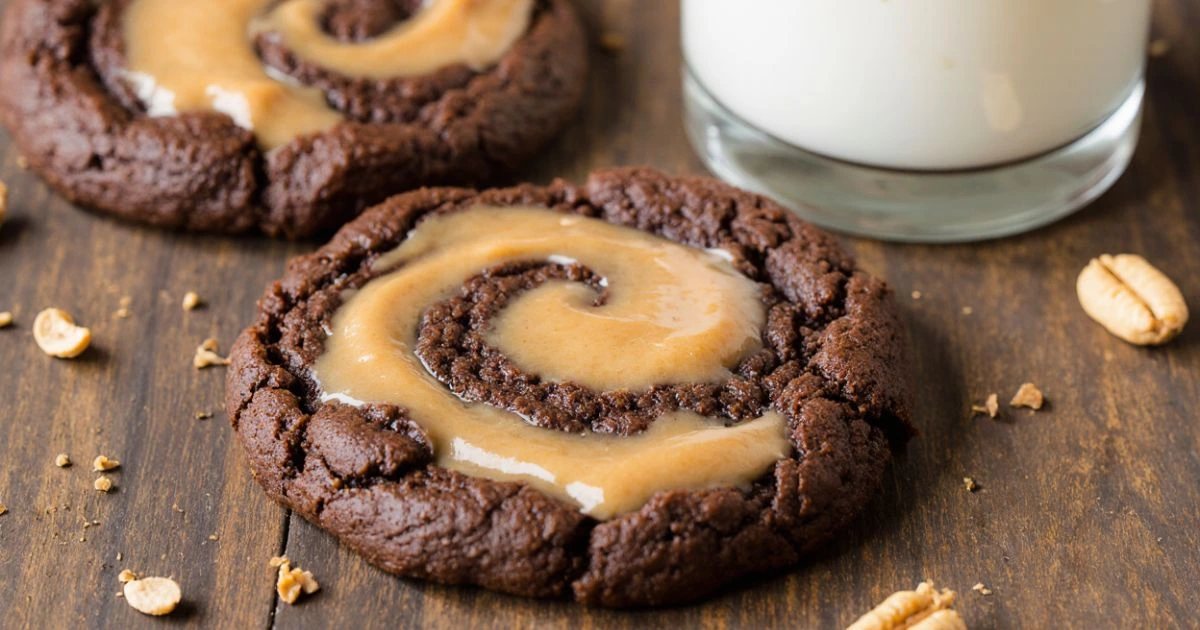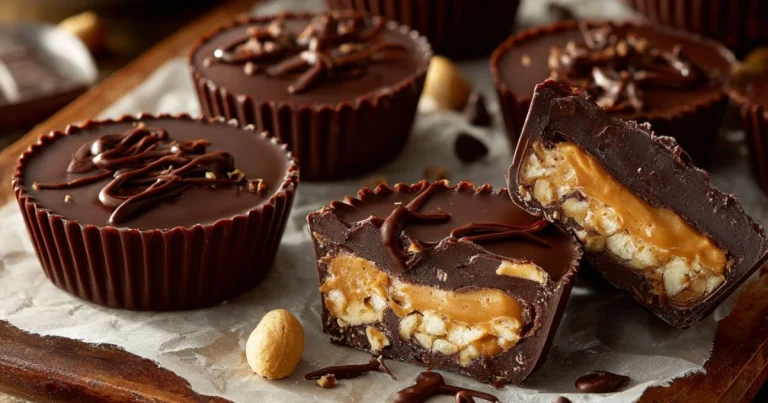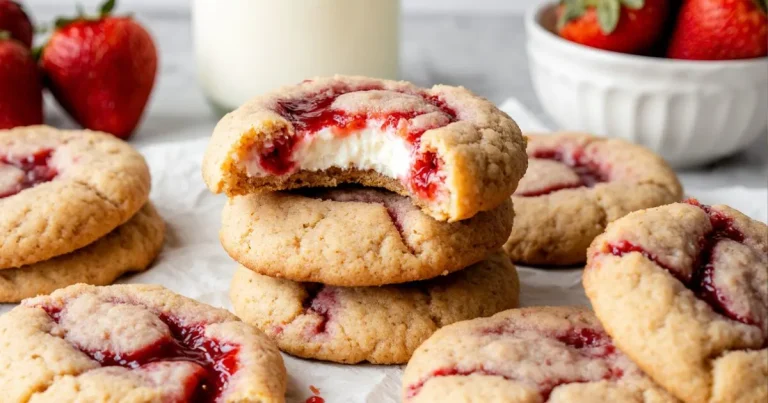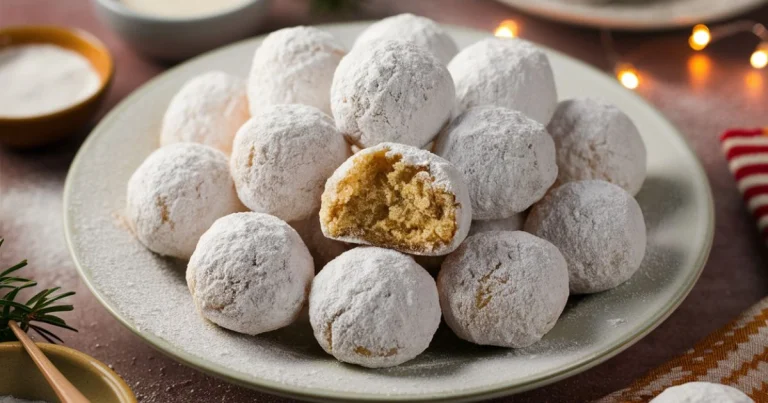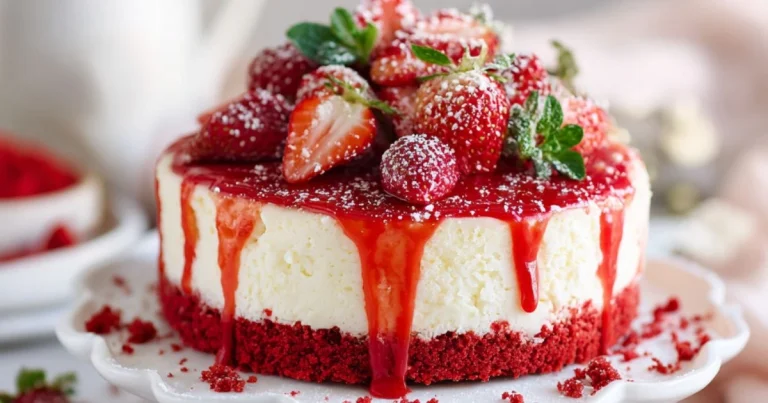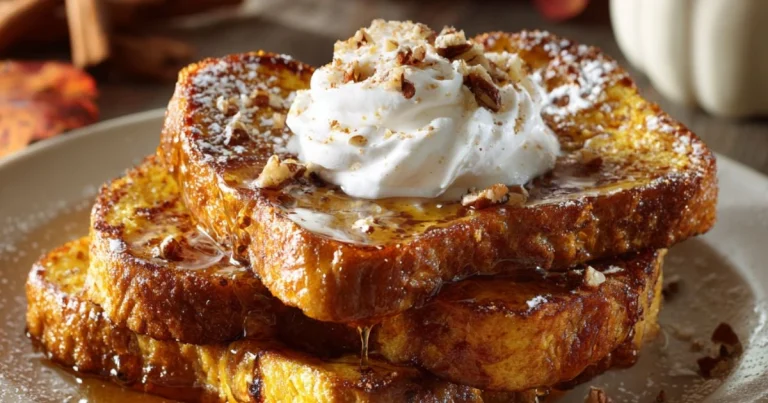Peanut Butter Brownie Swirl Cookies
Craving a dessert that’s both rich and visually stunning? Peanut butter brownie swirl cookies combine fudgy chocolate, creamy nut‑butter, and a gorgeous marbled pattern that makes them perfect for baking gifts, parties, or cozy nights in. In this guide you’ll learn everything: ingredients, baking technique, tips for perfect texture, variations, and answers to common questions.
What Makes These Cookies Special
These cookies are not just about flavor — they’re about contrast in taste, texture, and appearance:
- Rich, indulgent brownie dough provides a fudgy, chocolate foundation.
- Creamy or slightly nutty peanut butter dough adds flavor and softness.
- The swirl or marbling gives visual appeal and lets both flavors shine without overpowering each other.
If you like exploring similar combos, try tips for swirl techniques from Sweet & Stirred (on how to swirl peanut butter without over‑mixing) or expert advice on balancing brownie mixes from Epicurious. These teach you how to maintain separation of doughs so swirls hold up in the oven.
Ingredients & Why They Matter
To get the best texture and flavor, here’s what you’ll need, and why each part is important:
| Ingredient | Role | Tips / Notes |
|---|---|---|
| Creamy peanut butter | Adds richness, nutty flavor, fat for tenderness | Use a runny or room‑temperature peanut butter for easier swirling. Natural vs standard can affect texture. |
| Butter & Sugars (brown + granulated) | Fat for chew, sugar for browning and sweetness | Brown sugar gives chewiness; white sugar helps crisp edges. |
| Cocoa powder / melted chocolate | Chocolate flavor in the brownie portion | Use Dutch‑process cocoa for darker color and richer flavor or combine with melted chocolate for fudginess. |
| Flour, leavening, eggs | Structure, lift, binding | Don’t overmix flour to avoid a cakey result. Room‑temp eggs help with smoother mixing. |
| Salt & Vanilla | Flavor enhancers | Small amounts of salt make chocolate and peanut butter pop; vanilla rounds sweetness. |
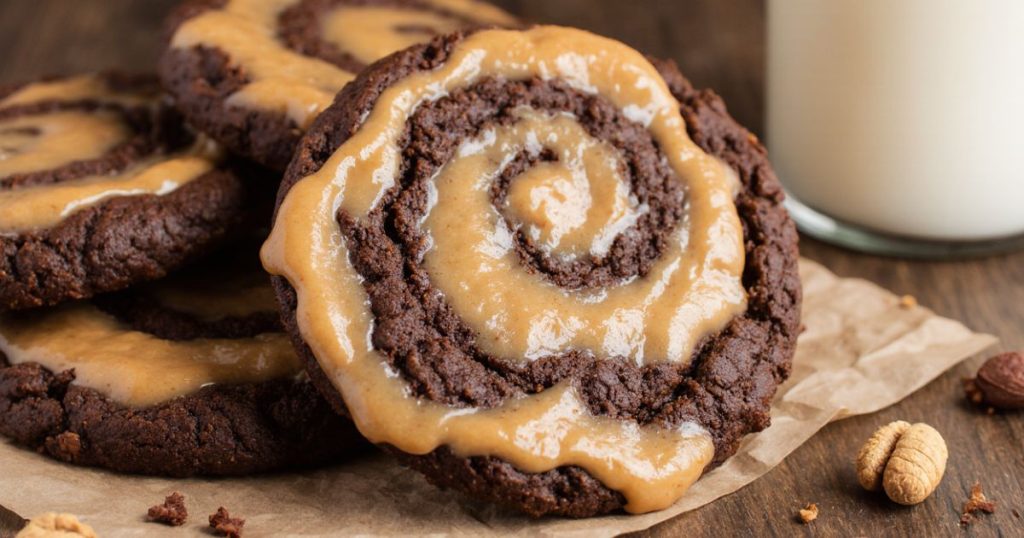
Equipment, Prep & Recipe Overview
Before you start baking, make sure you have:
- Mixing bowls, electric mixer or stand mixer
- Baking sheets, parchment paper or silicone mats
- Wire rack for cooling
- A spoon or small measuring scoop for shaping
- A toothpick, chopstick, or skewer for swirling
Here’s a streamlined method to make these cookies:
- Make two doughs: one peanut butter‑based, one chocolate/brownie‑based.
- Chill both doughs (≈ 30 minutes). Chilling helps with better swirls and prevents spreading.
- Portion out doughs, then assemble by placing/marbling/swirl together. For instance, drop spoonfuls of peanut butter on brownie dough and swirl gently.
- Bake at about 350°F (175‑180°C) until edges are set, centers slightly underdone (they’ll firm up off the heat).
- Cool on the sheet for a few minutes before transferring to rack; this helps them hold shape.
Many recipes, like ones from CookingWithRuth or YummyOlk, emphasize the importance of chilling and watching doneness closely to get a chewy, gooey center. Cooking With Ruth+2Yumm Yolk Recipes+2
Tips for Perfect Texture & Appearance
Achieving the perfect texture and marbled look in your peanut butter brownie swirl cookies takes more than just the right ingredients—it’s about technique and precision.
- Use room temperature ingredients. This ensures smooth mixing, especially with butter, eggs, and peanut butter. Cold ingredients can cause uneven dough texture.
- Chill your doughs. After mixing, refrigerate both doughs for at least 30 minutes. This helps reduce spreading and makes it easier to shape and swirl without smearing.
- Don’t overmix. Overmixing the flour or swirling the two doughs too aggressively can result in a tough cookie and a muddled swirl. Gently fold and lightly swirl for that distinct marbled look.
- Use consistent portions. A cookie scoop ensures even sizes, which leads to uniform baking and prevents under- or overbaked cookies.
- Watch your bake time. Remove cookies when edges are set and centers look slightly underdone. They’ll continue to bake on the sheet, resulting in that soft, fudgy center.
- Cool correctly. Let cookies sit on the baking tray for 5 minutes before transferring to a wire rack. This helps them firm up without overbaking.
With these simple techniques, your cookies will not only taste amazing but look bakery-worthy, too.
Sites like YummyOlk highlight these exact tips: check chilling and doneness as key to keep softness and chewiness. Yumm Yolk Recipes
Variations & Substitutions
One of the best parts of peanut butter brownie swirl cookies is how customizable they are. Whether you’re accommodating dietary needs or experimenting with flavor, here are some delicious variations and smart substitutions.
Nut Butter Alternatives
- Swap peanut butter with almond butter, cashew butter, or sunflower seed butter for a nut-free version. Make sure the substitute is creamy and not too oily or dry.
- For a crunchier texture, use chunky peanut butter.
Chocolate Options
- Use dark chocolate, milk chocolate, or white chocolate chips in the brownie dough for different levels of sweetness.
- Add a handful of chocolate chunks or mini chips to intensify the chocolate flavor and texture.
Flavor Add-Ins
- Sprinkle in sea salt flakes on top for a sweet-salty contrast.
- Add espresso powder to the brownie dough to deepen the chocolate flavor.
- Mix in chopped nuts, caramel bits, or even a swirl of Nutella for extra richness.
Dietary Substitutions
- For gluten-free cookies, use a 1:1 gluten-free flour blend.
- Make it dairy-free with vegan butter and dairy-free chocolate.
- Use flax eggs (1 tbsp ground flax + 3 tbsp water) as an egg replacer for a vegan version.
Sweetness Control
- Reduce sugar slightly for a less sweet cookie or substitute with coconut sugar or maple syrup (adjust dry ingredients accordingly).
These variations allow you to tailor your swirl cookies to any preference without sacrificing their iconic marbled look or rich, fudgy texture.
Storage, Freezing & Make‑Ahead Tips
One of the best things about peanut butter brownie swirl cookies is that they can easily be made ahead, frozen, and stored without compromising their taste or texture.
Make-Ahead Tips
- You can prepare the dough in advance and store it in the fridge for up to 2 days. This is especially helpful for those short on time. Just chill both doughs separately, then swirl and bake when you’re ready.
- For a more streamlined experience, portion the dough into cookie balls before refrigerating. Once chilled, you can bake them straight from the fridge.
Freezing Cookie Dough
- Freeze the dough for up to 3 months. Portion out the dough into balls or logs (if you want to slice later) and place on a baking sheet to freeze individually. Once firm, transfer to a zip-top bag or airtight container.
- Bake frozen dough directly from the freezer, adding an extra 2-3 minutes to the bake time. This ensures they retain their perfect texture.
Freezing Baked Cookies
- You can also freeze baked cookies for up to 2-3 months. Allow the cookies to cool completely before placing them in an airtight container with layers of parchment paper to prevent sticking.
- Thaw them at room temperature or warm them in the oven for a few minutes to restore that fresh-baked taste.
These make-ahead and freezing options ensure that you’ll have peanut butter brownie swirl cookies whenever the craving strikes!
Common Issues & Troubleshooting
| Problem | Cause | Fix |
|---|---|---|
| Cookies spread too much / lose swirl | Dough too warm; not chilled; too much butter or lack of flour | Chill thoroughly; adjust flour or butter ratio; use cooler oven or baking sheet. |
| Swirl pattern disappears | Over‑swirling; doughs similar consistency; peanut butter too thick or cold | Swirl lightly; ensure peanut butter is room‑temp and runny; adjust thickness. |
| Cookie too dry or cakey | Overbaking; too much leavening or flour; not enough fat | Bake until just done; reduce flour or increase fat; reduce baking powder/soda. |
| Burnt edges or underbaked center | Oven hot spots; mismatched baking times; uneven dough sizing | Rotate trays; use even scoops; check center with toothpick or visual cues. |
Serving & Presentation Ideas
- Serve warm with a glass of milk, or with coffee or tea to balance richness.
- Plate on parchment or decorative tin so swirls are visible.
- Sprinkle a little flaky sea salt on top right after baking to highlight sweetness.
- Gift idea: stack cookies with parchment between, tie with ribbon.
FAQ
- Can I use natural peanut butter instead of regular creamy peanut butter?
Yes — but natural peanut butter is usually runnier and separates. Stir well before using; you may need to chill the dough a bit more so it holds shape. - What is the best way to get distinct swirl patterns?
Use slightly runny peanut butter, drizzle or dollop, then gently swirl with a toothpick or skewer. Avoid over‑swirling to maintain contrast between chocolate and peanut butter. - Can these cookies be made gluten‑free or vegan?
Absolutely. Use a gluten‑free flour blend, plant‑based butter, and egg replacement (like flax egg or commercial egg replacer) to adapt. - How should I store leftover cookies to keep them fresh?
Place in an airtight container at room temperature up to 5‑7 days. Freeze extras if needed, separated by parchment paper. - Can I freeze the dough or baked cookies?
Yes. Baked cookies freeze well; for dough, shape into logs or balls, freeze, then bake from frozen with a few extra minutes. - How do I avoid over‑baking and losing the fudgy interior?
Pull the cookies when edges are set but centers still look slightly soft. They’ll continue cooking slightly on the hot baking sheet after removal.
Conclusion
If you follow the steps above, you’ll get peanut butter brownie swirl cookies that are fudgy, chewy, beautifully marbled, and delightful in every bite. Try the basic version first, then personalize with swaps and add‑ons. Baking is as much about tasting along the way as it is about technique—so bake, experiment, enjoy!

